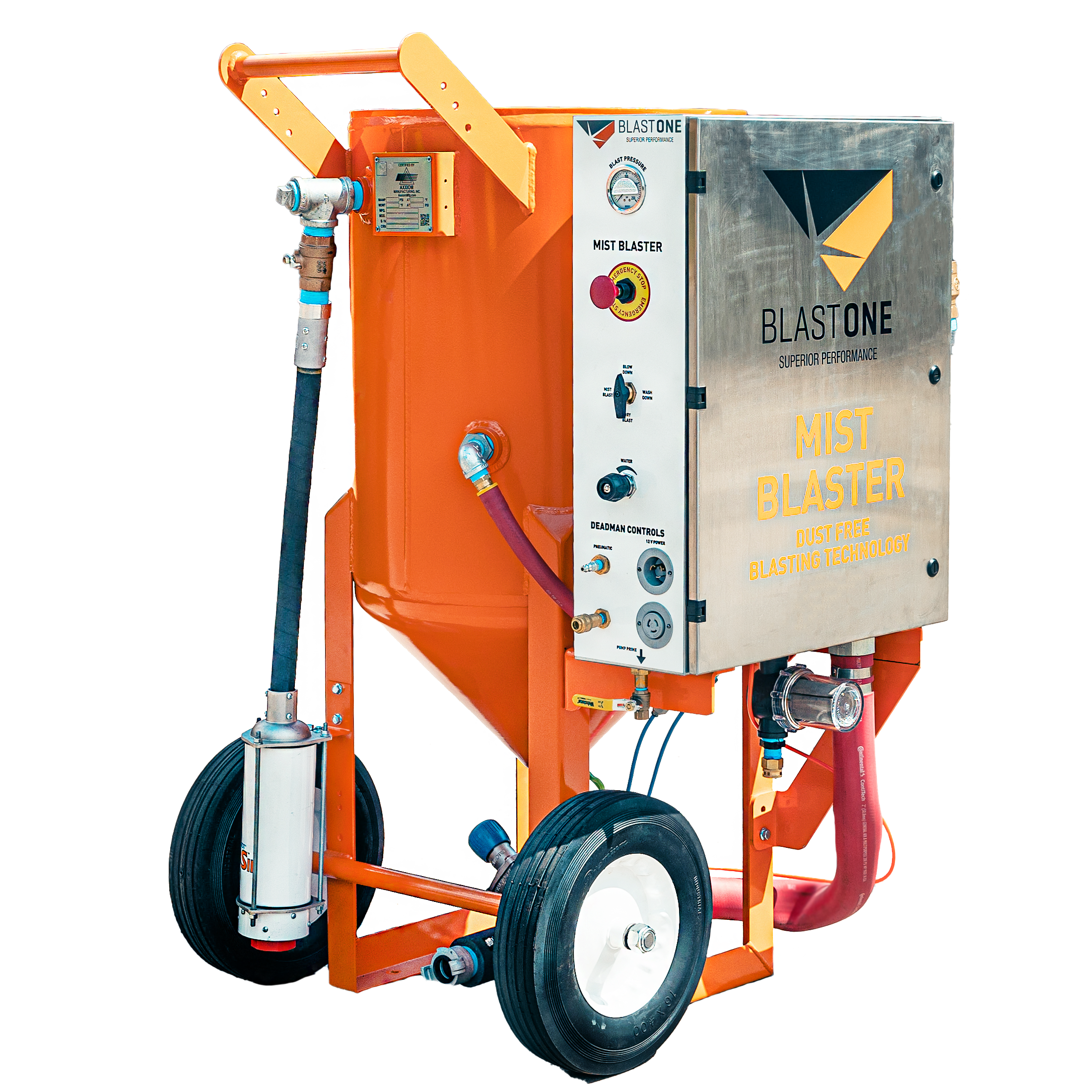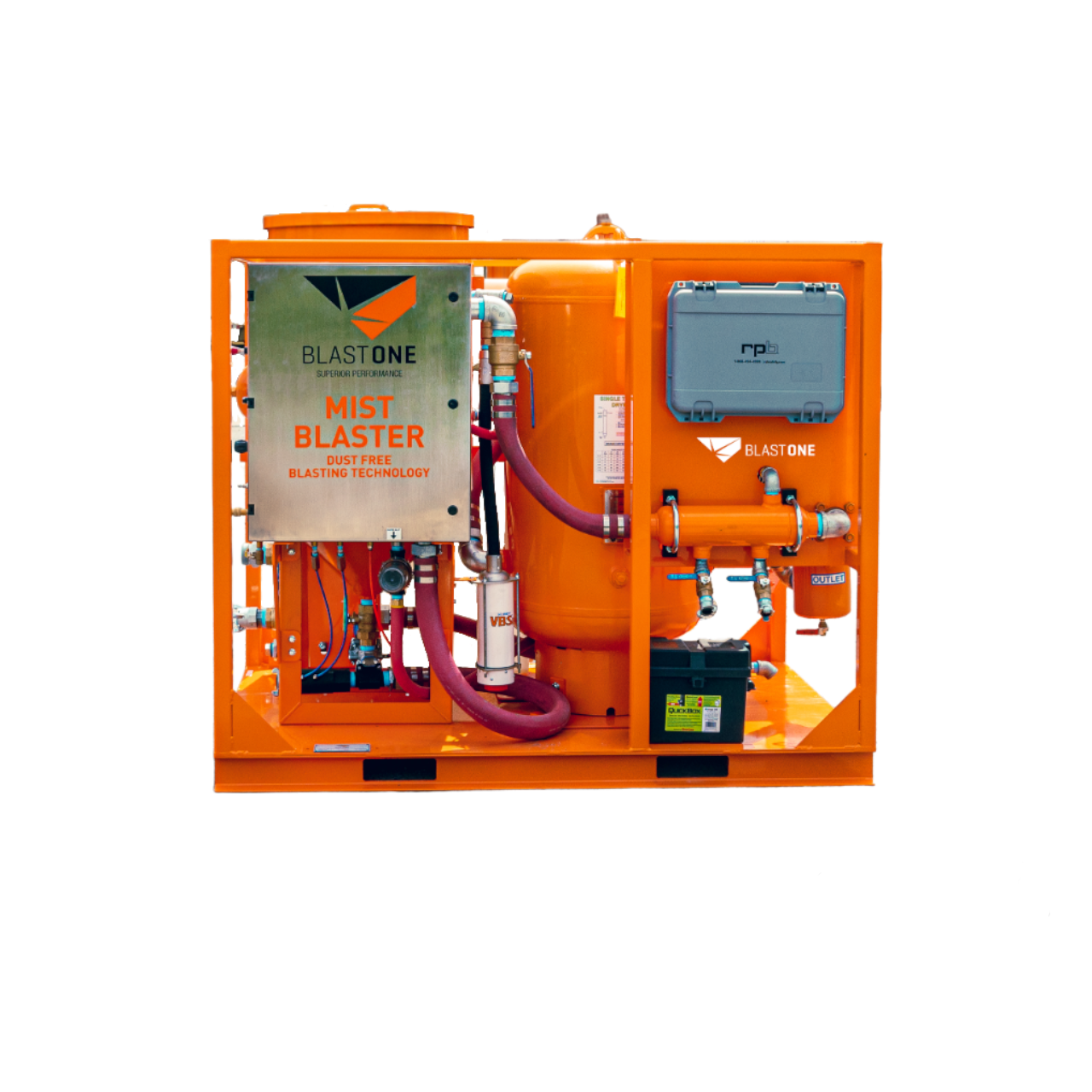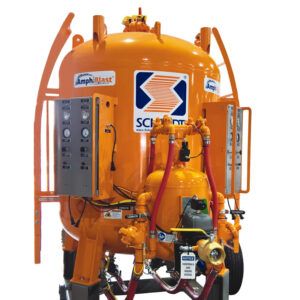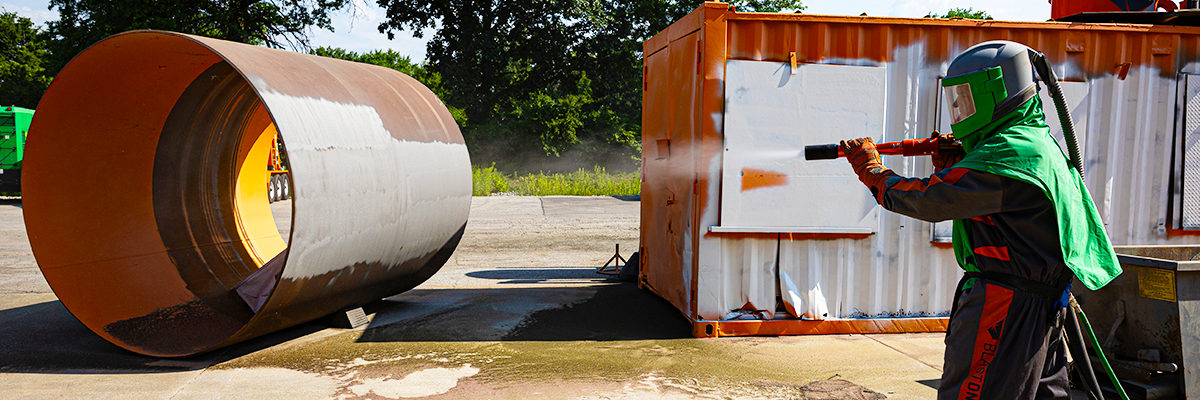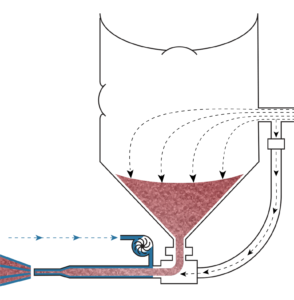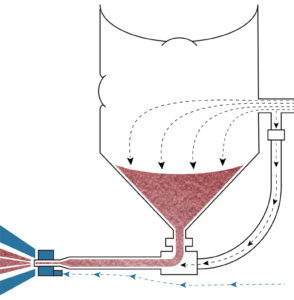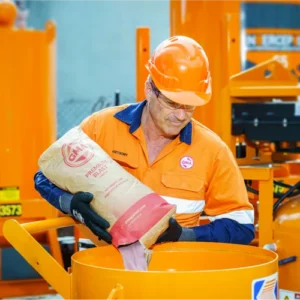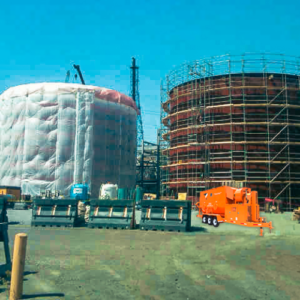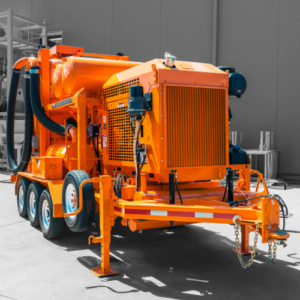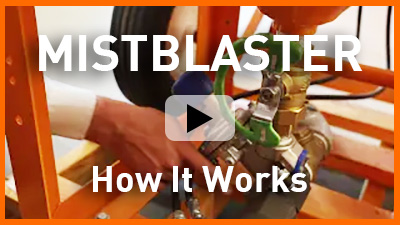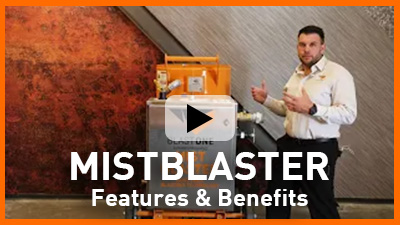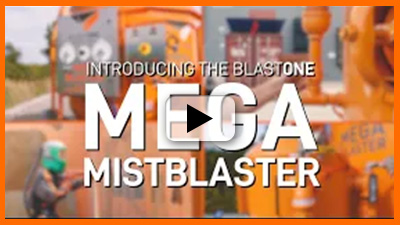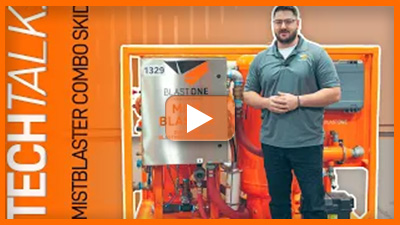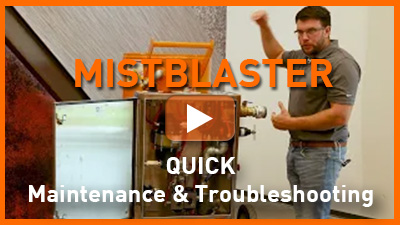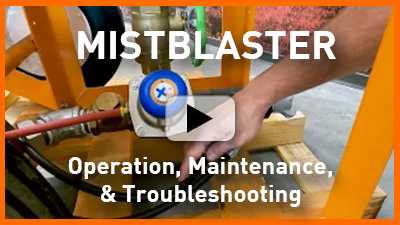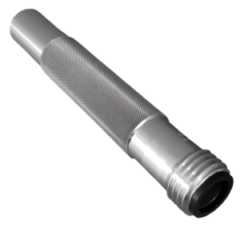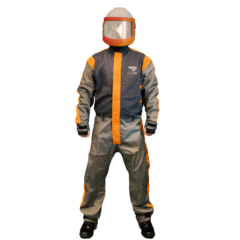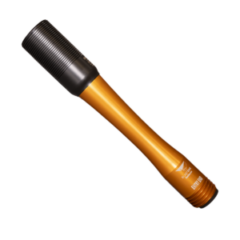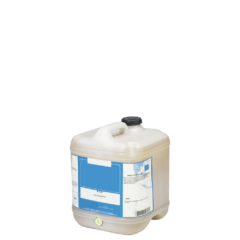Wet Abrasive Blasting Equipment: Essential for Field Painting and Industrial Contractors
Wet blasting, often referred to as dustless blasting, mist blasting, slurry blasting, or vapor blasting, is a surface preparation process that combines water and abrasive media to effectively clean, strip, and finish various materials. This innovative technique delivers a superior finish while significantly reducing dust and environmental impact compared to traditional dry blasting methods.
Wet Blasting vs. UHP Water Blasting
It’s essential to distinguish wet blasting from Ultra High Pressure (UHP) blasting. While both processes involve water, UHP blasting relies solely on high-pressure water to clean surfaces. In contrast, wet blasting incorporates abrasive media, creating a surface profile for enhanced adhesion and durability.
Wet blasting is the preferred method for achieving a desired surface finish and removing stubborn contaminants.
How Wet Blasting Works
Wet abrasive blasting was introduced over 50 years ago, so it is not a new concept. Technology is evolving however, and options now exist that offer faster production as well as lower water consumption vs. older technologies. Here are 3 common wet blasting equipment options:
Why use Wet Vapor Blasting Systems?
Wet vapor abrasive blasting reduces the dust generated by dry blasting but can still remove coatings and corrosion residue and create a clean, profiled surface.
The advantage of wet blasting technologies is the ability to blast without dust when containment is too costly or not viable.
With the MistBlaster, you have precise control of the air, grit, and water flow to lock in optimal blasting performance with efficient grit and water consumption. Once optimal flow parameters are set, switching between normal blasting settings and lower air pressure for wash down and blow off is consistent, fast, and easy. Blasting pressures are also able to be set between 10 and 150 psi.
Wet Abrasive Blast Equipment: Key Buying Considerations
Expert Insights on Wet Abrasive Blasting
To gain a deeper understanding of wet abrasive blasting, we consulted with industry experts. Their combined experience provides valuable insights into equipment selection and performance. In the following section, we’ll share key factors to consider when choosing the right wet abrasive blasting system for your business.
- One major benefit of wet abrasive blasting is the potential of reducing or eliminating the cost of containment.
- Water consumption is a big consideration – especially when blasting steel. It is standard practice to use a rust inhibitor in this application and that is not inexpensive. Slurry-type blasters inevitably use more rust inhibitor than the hybrid types. Even when blasting concrete and therefore not using rust inhibitor, excess water creates a mess to work in and potentially to clean up. High quality hybrid units offer the capability to adjust water flow separately from abrasive flow, which gives the ability to use just enough water to keep the abrasive damp, while keeping abrasive flow high enough to maximize blasting speed.
- Regardless of what may be claimed, wet abrasive blasting is always slower than dry blasting when comparing apples-to-apples. In addition, water does NOT do any of the blasting work – its sole function is to mitigate dust.
- Hybrid units are unquestionably the best equipment for industrial projects. For small projects, production speed is less of a factor, and water/inhibitor consumption aren’t that high anyway, so the less costly slurry and nozzle options maybe be viable. But without a doubt, large wet blast abrasive projects will be most economical overall when done with hybrid equipment.
Key Factors to Evaluate:
- Metering Valve: This crucial component directly impacts abrasive consumption and production efficiency. Opt for a valve offering fine control to minimize waste and maximize output. Look for durability, ease of unclogging, repairability, and innovative technology. Research and compare different valve options before making a choice.
- Pressure Efficiency: Pressure loss within the machine can significantly impact productivity. Pressure drop of 10 PSI can translate to a 15% slower blasting speed. Ensure the equipment offers minimal pressure loss between the inlet and outlet.
- Field Support: Reliable manufacturer or distributor support is essential for optimizing equipment usage and troubleshooting. Consider the availability of field technicians and their expertise in job setup, equipment maintenance, and best practices for your desired projects.
- Versatility: Choose equipment that excels in both wet and dry blasting applications. A purely wet-blasting machine might limit your project range and return on investment.
- Try Before You Buy: Demoing or renting the equipment allows firsthand experience before purchase. This provides a valuable opportunity to assess both the machine’s performance and the supplier’s service.
- Used Equipment Market: A high number of used machines for a specific model may indicate potential issues. Explore platforms like Facebook Marketplace and BlastTrader.com to compare used equipment prices and depreciation rates.
- Customer References: Request referrals from your potential supplier, particularly those who have switched from other brands. Ask specific questions about their experience, equipment strengths and weaknesses, and overall satisfaction.
Informed Decisions for Your Business
By considering these key points, you can make an informed decision that aligns with your specific needs and maximizes your wet abrasive blasting investment.
Common issues with Wet Vapor Blasting Systems
Dust Mitigation Alternatives to Wet Blasting
While wet blasting is an effective method for dust control in abrasive blasting, it’s not the only solution. Here are alternative approaches to consider:
 My Account
My Account


